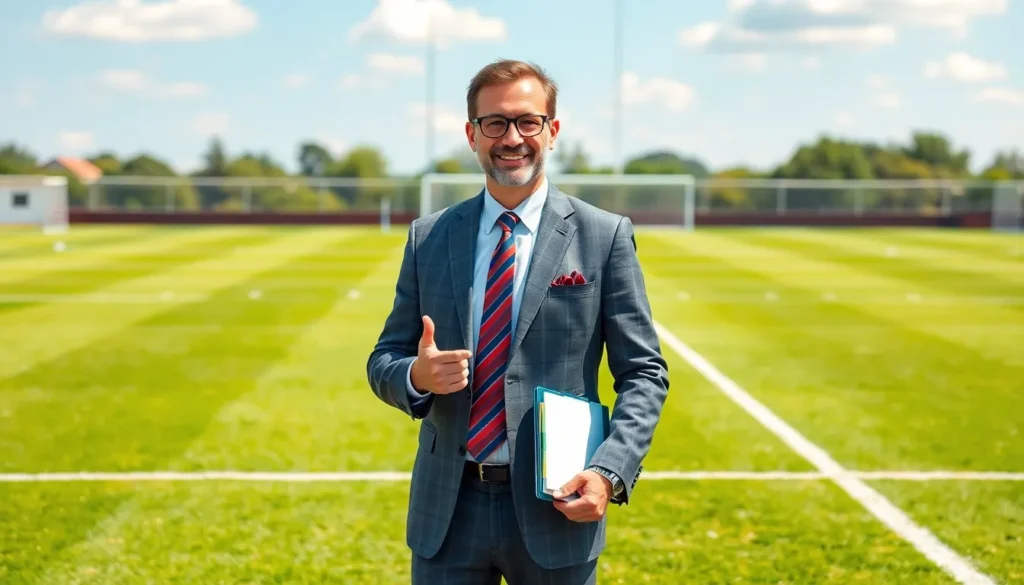Table of Contents
ToggleIn a world where emojis often replace words and texts can lead to misunderstandings, mastering communication has never been more crucial. It’s not just about talking; it’s about connecting, persuading, and sometimes even dodging awkward silences like a pro. Imagine being the person who can turn a mundane meeting into a lively discussion or transform a simple email into a captivating narrative.
Understanding Communication Mastery
Communication mastery represents the ability to convey thoughts and feelings effectively. It encompasses skills like active listening, clear expression, and emotional intelligence.
Definition of Communication Mastery
Communication mastery refers to the proficiency in exchanging information in a way that others understand. It also includes non-verbal cues like body language and tone. Mastering these elements encourages meaningful interactions, fostering connections beyond words. This skill set allows individuals to articulate their ideas and respond appropriately, ensuring clarity. Enhancing these capabilities can result in improved relationships, both personally and professionally.
Importance in Personal and Professional Life
Effective communication plays a vital role in personal and professional settings. In personal relationships, it strengthens bonds and resolves conflicts efficiently. Strong communication skills help individuals express emotions and needs clearly, enhancing understanding between parties. In professional scenarios, it drives productivity through clear directions and collaborative teamwork. Engaging presentations and persuasive emails stem from communication mastery. Improved skills influence success in networking, negotiations, and leadership. Mastering communication can make significant impacts on achieving personal goals and career advancement.
Key Components of Communication Mastery

Effective communication mastery consists of several vital components that enhance interactions. Focusing on verbal and non-verbal skills, along with active listening techniques, forms the foundation of clear connections with others.
Verbal Communication Skills
Clarity in verbal communication promotes understanding. Articulating thoughts precisely reduces misunderstandings and builds rapport. Utilizing a suitable tone strengthens the emotional connection. Vocabulary choice matters; using simple, accessible language keeps audiences engaged. Presenting ideas in a structured manner aids retention and facilitates discussion.
Non-Verbal Communication Skills
Non-verbal cues play a crucial role in conveying messages. Body language, such as posture and gestures, enhances verbal communication. Eye contact expresses confidence and builds trust. Facial expressions, conveying emotions, can reinforce spoken words. Cultivating awareness of personal space enables respectful interactions, while adapting to others’ non-verbal signals fosters better connections.
Active Listening Techniques
Active listening techniques ensure understanding and engagement. Focusing attention on the speaker demonstrates respect and interest. Paraphrasing their points confirms understanding and encourages further dialogue. Asking clarifying questions shows curiosity and importance in the conversation. Providing feedback maintains the flow of communication, leading to more meaningful exchanges.
Strategies to Develop Communication Mastery
Effective communication mastery requires practicing essential strategies. The following approaches highlight key areas for growth.
Practicing Empathy
Empathy enhances communication effectiveness. Understanding emotions and perspectives fosters deeper connections. Active engagement in conversations builds rapport and trust. When individuals make an effort to see situations through others’ eyes, it diminishes barriers and promotes open dialogue. Practicing empathy constructs a foundation for collaboration and conflict resolution, vital in both professional and personal settings.
Enhancing Clarity and Conciseness
Clarity and conciseness improve message delivery. Keeping messages straightforward prevents misunderstandings. Choosing precise words conveys intentions better. Structured presentations aid listener retention, making key points easily digestible. Eliminating filler words enhances focus and maintains interest. Effective communicators use bullet points or numbered lists to organize thoughts, making information clearer and more accessible.
Utilizing Feedback Effectively
Feedback serves as a crucial tool for improvement. Seeking constructive criticism encourages growth in communication skills. Incorporating suggestions allows for the refinement of techniques. Observing how messages resonate with others provides insight into effectiveness. Individuals can adapt their style based on the feedback received, promoting continual skill enhancement. Regularly requesting feedback fosters a culture of open communication and trust.
The Role of Technology in Communication Mastery
Technology significantly influences communication mastery. It provides tools that enhance connections and foster collaboration.
Digital Communication Tools
Various digital communication tools facilitate effective interactions. Email applications streamline professional correspondence, enabling clear and concise messaging. Instant messaging platforms, like Slack or Microsoft Teams, foster real-time dialogue and quicker responses. Video conferencing software such as Zoom supports face-to-face interactions despite geographical barriers, enhancing personal connections. Social media networks facilitate broader engagement, allowing individuals to share insights and build relationships. Each of these tools plays a pivotal role in shaping how individuals exchange information, making communication more efficient and accessible.
Overcoming Barriers in Virtual Communication
Overcoming barriers in virtual communication is crucial for effective engagement. Misinterpretations can arise due to the lack of non-verbal cues in text-based communications. To address this, individuals can employ video calls, which reintroduce visual elements like facial expressions and body language. Active listening techniques become vital; focusing on the speaker and responding appropriately ensures clearer understanding. Encouraging open dialogue helps to create an environment where participants feel motivated to express concerns or ask questions. Building trust relies on consistent communication and responsiveness, fostering stronger relationships in virtual settings.
Mastering communication is essential for thriving in both personal and professional realms. By honing skills like active listening and emotional intelligence individuals can foster deeper connections and navigate complex interactions with ease.
The integration of verbal and non-verbal communication enhances clarity and trust while leveraging technology effectively bridges gaps in understanding.
As individuals commit to continual improvement and seek feedback they position themselves for greater success in networking negotiations and leadership. Embracing these strategies not only enriches conversations but also paves the way for meaningful relationships and career advancement.







